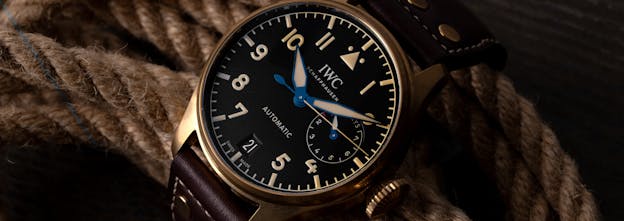Zulu Time: A Non-Pilot’s Guide To The Pilot’s Watch
The evolution of the pilot’s watch tells the story of the evolution of flight itself.
The pilot’s watch, along with the diver’s watch, has over the century or so since the birth of modern aviation, been an instrument designed to achieve a particular purpose – however, what the purpose is, and how the watch fulfills that purpose, can vary dramatically from one watch to the next, and from one period in the history of aviation to the next. Perhaps the biggest difference between a pilot’s watch and a diver’s watch is that a diver’s watch is defined by a fairly rigid international standard – that’s the well known ISO 6425, which has additional stipulations for diver’s watches intended for mixed gas and saturation diving.
What Is A Pilot’s Watch?
Pilot’s watches, however, are not subject to any such definition, although they generally follow the requirements of particular aviation environments. The first pilot’s watch we know of is not what most of us today would call a pilot’s watch at all – it’s the Cartier Santos, which is named for aviation pioneer Alberto Santos-Dumont. The son of wealthy Brazilian coffee plantation owners, Santos-Dumont spent most of his life in Paris and was a major aviation pioneer, first in lighter-than-airships, and then in winged aircraft (in Brazil, he’s a national hero and it’s sometimes argued that he was ahead of the Wright Brothers in demonstrating a practical heavier-than-aircraft).
Santos-Dumont was a friend of Louis Cartier’s and the story goes that he asked Cartier to design a wristwatch for him, in order to avoid having to take his hands off the controls of his aircraft in order to check the time. The watch is amazingly enough, still with us today, and largely identical to the original.

By the 1930s, aircraft had begun to take on designs far beyond the fragile, fabric and wood biplanes of the First World War, and pilot’s watches evolved along with them. In the 1930s and 1940s, the pilot’s watch was generally designed for high legibility, with luminous radium-painted hands and markers on a black dial; both wristwatch and pocket watch movements were used. Some of the larger watches designed specifically for navigation used pocket watch movements and came on long leather straps that allowed pilots to strap the watch to their thigh.
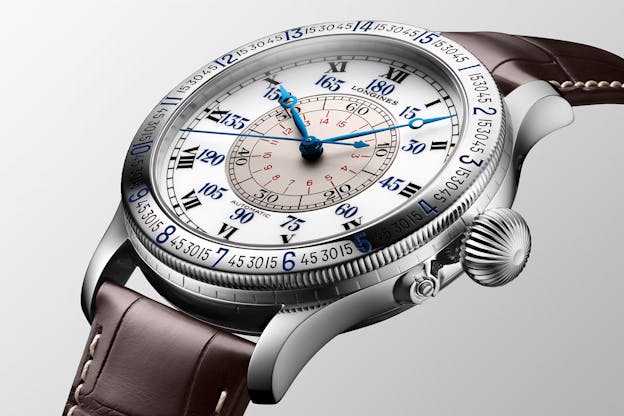
Some of the most unusual pilot’s watches were made by Longines, and designed to be used with an air navigation system developed by Phillip Van Horn Weems; the system used a system of celestial navigation in order to establish latitude and longitude. The Longines Lindbergh Hour Angle watch was designed with input from both Weems and Charles Lindbergh and is one of the most idiosyncratically specific designs in the history of pilot’s watches.
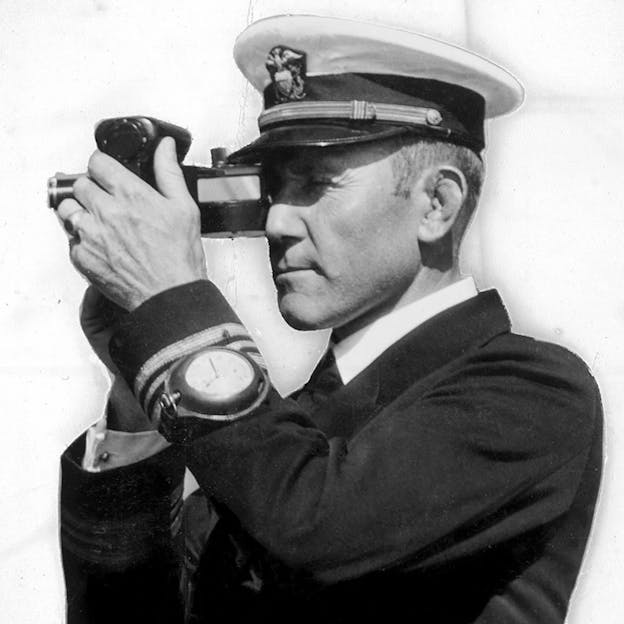
Post World War II, pilot’s watches began to take on several different more or less specific forms. The Weems system was gradually superseded by radio direction finding, and then, finally GPS, although celestial navigation was still a part of both military and civilian aviation up through the 1960s – the first generation of Boeing 747s had a transparent dome in the cockpit roof to allow astronomical observations, and amazingly enough, the SR-71 Blackbird spy plane, which to this day still holds the all time speed record for an air-breathing aircraft, used a highly complex automated celestial navigation system as well. SR-71 and X-15 rocket plane pilots, by the way, wore a most unusual pilot’s watch – the tuning fork powered Bulova Accutron Astronaut.
The Basic Black Antimagnetic Pilot’s Watch
The most basic version of the pilot’s watch is an unadorned watch with a black dial, center seconds, a stop seconds “hacking” function, antimagnetic inner case, and a high precision movement; the classic example is the Mark XI, which was made by IWC and Jaeger-LeCoultre to a British Ministry of Defense specification. The Mark XI spec watches were issued beginning in the late 1940s and was not decommissioned until the early 1980s, and the design remains an archetype of not only pilot’s watch design, but tool watch design in general.
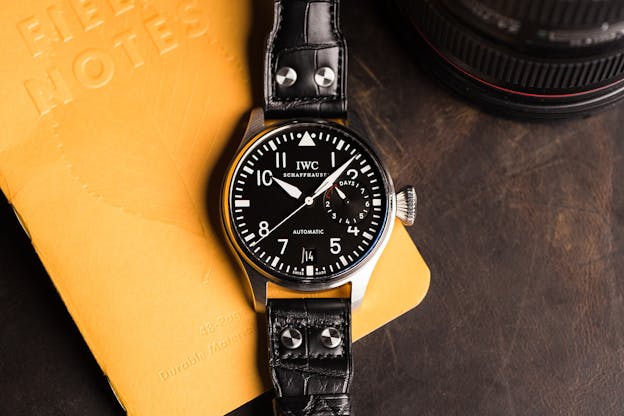
One of the most fundamental distinguishing characteristics is antimagnetic shielding. Aircraft electrical equipment can generate strong magnetic fields – magnetos, for instance, which are small generators used to start the engines of piston engine aircraft, use powerful permanent magnets and although magnetic field strength falls off fast with distance, it doesn’t take much to put a watch off its rate. Antimagnetic shielding in pilot’s watches historically consisted of a “soft iron” (an iron-nickel alloy) dial and inner case – this is frequently mischaracterized as a Faraday cage, which is incorrect as a Faraday cage blocks radio frequency electromagnetic radiation but not magnetic fields. (A shoplifter’s foil lined “booster bag” is an example of a Faraday cage). The inner case provides an enclosure which has very low resistance to magnetic field lines, so a magnetic field will follow a preferred pathway through the case material rather than the watch movement.
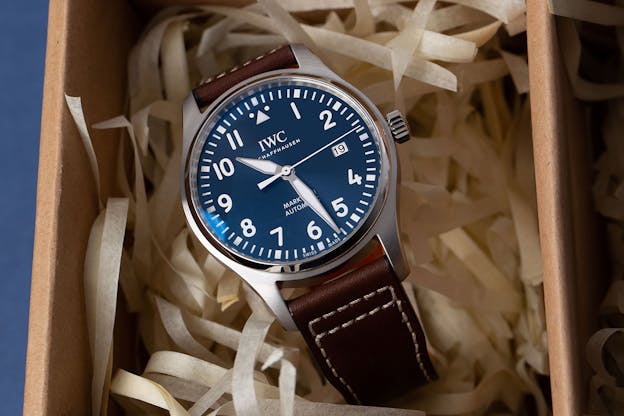
IWC still produces, in its Mark series and Big Pilot’s watches, timepieces that use a soft iron inner case – not as effective as using silicon and other amagnetic materials, but with a certain old-school charm more modern materials science solutions don’t have.
The Flyback Chronograph Pilot’s Watch
The flyback chronograph is even today a somewhat unusual complication and this is partly because it has some fairly specific use cases. A flyback chronograph – not to be confused with a rattrapante, or split seconds chronograph, which can be used to time successive intervals (the time it takes for two competing cars to cross a finish line, for instance) is one in which pressing the return to zero button, without first stopping the chronograph, will cause the chronograph to reset to zero – and the chronograph will begin running again from the zero mark, the moment you release pressure on the reset to zero button.
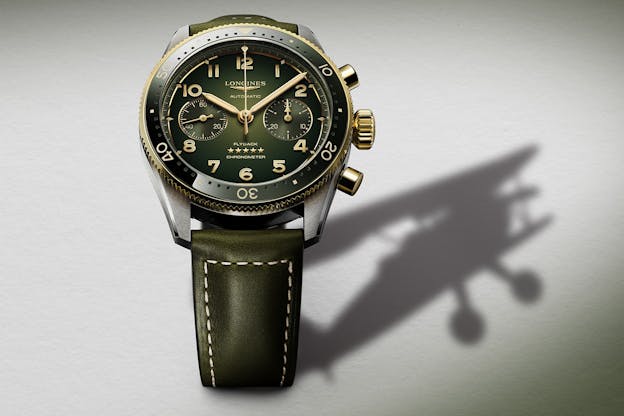
This is useful especially to pilots using dead reckoning navigation, especially when traveling at high speeds from waypoint to waypoint. The flyback function lets you restart the chronograph immediately when you have finished one timed leg of your flight plan, and begin timing the next leg, with no lost time. The first flyback chronograph was from Longines, and first launched in 1936 with the caliber 13 ZN.
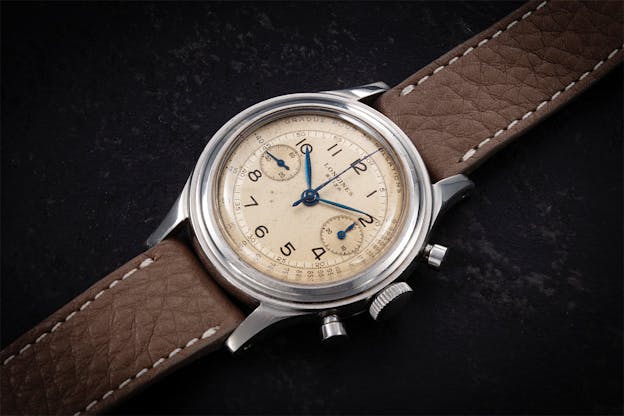
The gain of a few seconds may seem trivial but those seconds can add up to a meaningful error, of up to several miles depending on other flight plan characteristics, airspeed, and geographic location. Flyback chronographs are produced today by aviation heritage brands such as Breitling and Longines, and they have a history of use in air navigation going all the way back to the 1920s.
The GMT Pilot’s Watch
The purpose of the GMT watch is straightforward: showing the time in two (or even three) different time zones. There are two basic types.
- The “Flyer” GMT. The first type, represented by watches like the Rolex GMT Master II and the Black Bay GMT, have a 24 hour bezel, and an extra 24 hour hand for keeping track of home time when traveling. The hour hand on such watches can be set from the crown, backwards or forwards, in one hour increments depending on how many time zones you are away from your home time. The GMT complication began as one for pilots, for whom tracking the time in a second time zone is obviously useful, but it has become a general purpose watch for frequent flyers as well and with the addition of a rotating 24 hour bezel, it’s possible to see the time in up to three different time zones simultaneously.
- The “Caller” GMT. The second type does not have an independently settable hour hand. Instead, the 24 hour hand can be independently set, making this variation useful for tracking a second time zone when you’re at home (say, if you’re in New York but your overseas office is in Kuala Lumpur and you need to know when they’re open). It’s less useful for traveling, as to reset local time, and show home time, you have to pull out the crown, reset the time, and then reset the 24 hour hand to home time. The 24 hour hand will change position when you reset the time, so the extra step is necessary if you want it to show home time.
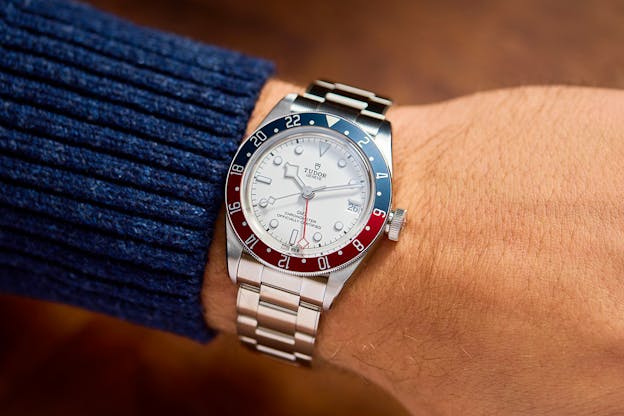
The name “GMT” comes from “Greenwich Mean Time” which is an obsolete term; technically it has been superseded by UTC, or Universal Time Coordinated. GMT/UTC is the default time used by all aircraft for air navigation (as you can imagine it would be chaos if each aircraft used, say, the time zone of its airport of departure) and UTC/GMT in aviation and military operations is called “Zulu” time. It’s not exclusive to aviation; Zulu time can be used to coordinate land, sea, and air maneuvers across multiple time zones in a theater of operations.
The Slide Rule Bezel Pilot’s Watch
This is the type of Pilot’s watch that really says “pilot’s watch” loud and clear, even to the uninitiated. The classic example is the Breitling Navitimer, with its somewhat intimidating “whiz wheel” bezel – the bezel is basically a circular slide rule, which like a conventional circular slide rule (you know how to use one of those, don’t you?) is inscribed with logarithmic scales, allowing mathematical calculations to be performed.
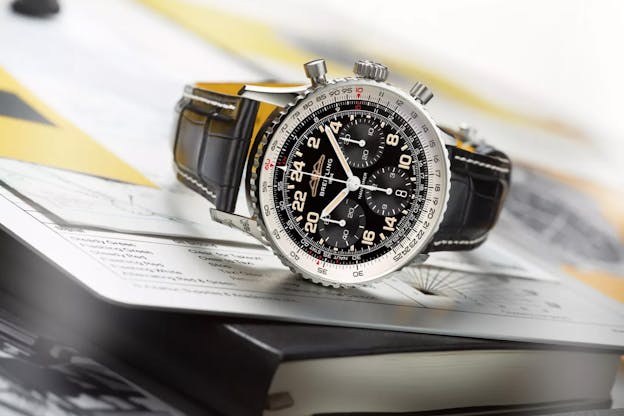
The slide rule bezel is based on the much larger, circular slide rule whose use is still taught to student pilots – that’s the E6B flight computer, the first version of which was developed in the 1930s by US Navy aviator Philip Dalton. The E6B can be used for a wide range of navigation calculations (calculating drift from lateral wind currents is just one of them) and the flight bezel is a little more limited, but can still be used to calculate time over distance, distance over time, and even things like fuel consumption. (You can of course use it for other kitchen arithmetic calculations as well).
Of all the types of pilot’s watches it is also the one whose use is understood – I’m convinced of this – by the fewest owners. I feel enormous pride of ownership when I put on my own Navitimer but I have written stories about how to use the bezel more than once and every time I learn I promptly forget. But it looks cool as hell.
The Multifunction Quartz Ana-Digi Pilot’s Watch
Purely from a practical standpoint, this might be the most useful type, albeit we all know that as a rule flight timing functions have long since been taken over by cockpit instruments and so-called glass cockpits. These watches are generally immediately identifiable as pilot’s watches, as they usually have slide rule bezels and the general air of intimidating complexity that so many pilots love. The paradigmatic examples are from Citizen – the Eco-Drive Skyhawk and Navihawk models, which are solar powered, and have functions ranging from multiple alarms, to chronographs, to countdown timers, world time indications for all time zones (not just a paltry 24) and whose only disadvantage is that due to the sheer number of indications on the dial, they can be a little hard to read.

I’ve owned a first generation Eco-Drive Skyhawk for many years and while the bezel’s gotten a little sticky over the last couple of decades, it keeps almost boringly accurate time – around three to five seconds per year plus or minus (depending on the year). Citizen has a long standing partnership with the Navy Blue Angels, and many years ago, I actually talked to a military pilot who mentioned that he and several of his squadron mates (I think he was an F-14 driver but I can’t remember for sure) loved them. He said the only issue was that sometimes during high G maneuvers, the hands could become unsynchronized (there is a fix in the manual in case that happens) but since I’ve never pulled eight Gs in jet, I’ve never run into any problems.
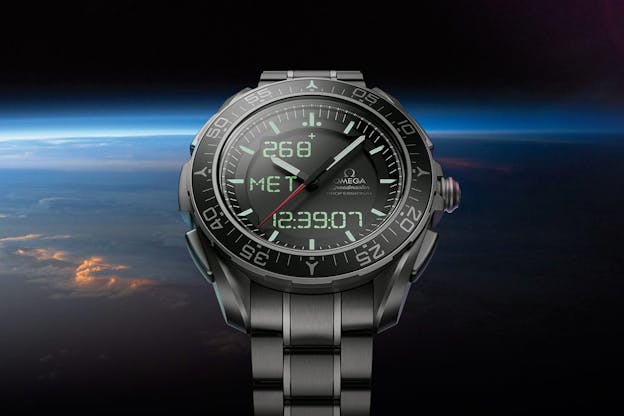
The other quartz MFD watches which deserve a major nod, are the Omega X-33 models, which have the distinction of having been used in crewed spaceflight, for which they are specifically designed, right from their inception. These watches are highly legible, they have extremely loud alarms (which is a feature, not a bug) and they include crewed spaceflight-specific functions like mission timers. If you’re looking for a modern MFD quartz watch that is designed specifically for space, the category consists of exactly one line of watches and they’re the X-33 models.
The Accidental Pilot’s Watch, For All You Speedmaster Fans
And finally, there are pilot’s watches that didn’t start out as pilot’s watches but which through sheer grit and determination, have become pilot’s watches.
The most obvious example is the Omega Speedmaster Professional Moonwatch, which is now indelibly identified with flight in general and crewed spaceflight in particular (is there anything more fun than watching Apollo 13 with your Speedmaster on and timing the “burn to correct shallowing on re-entry”?) The Speedmaster when it was introduced in 1957 was advertises as a watch for car enthusiasts and aside from the fact that the tachymeter scale tops out at 500mph, there is nothing about it that particularly says, “pilot’s watch” – except for the fact that it’s been used in crewed spaceflight ever since Project Gemini, right up to the present day.

There is one major advantage that the Speedmaster has over any quartz MFD watch, and that’s during spacewalks – watches are exposed to very extreme temperature changes during EVA, which will kill liquid crystal displays.
A colleague here at 1916 wears a Speedmaster as a daily driver, and when I pointed out to him that technically, the Speedmaster is not a flight watch per se, he responded, with real feeling, “It’s beyond flight.” When it comes to the Speedmaster, so say we all.


